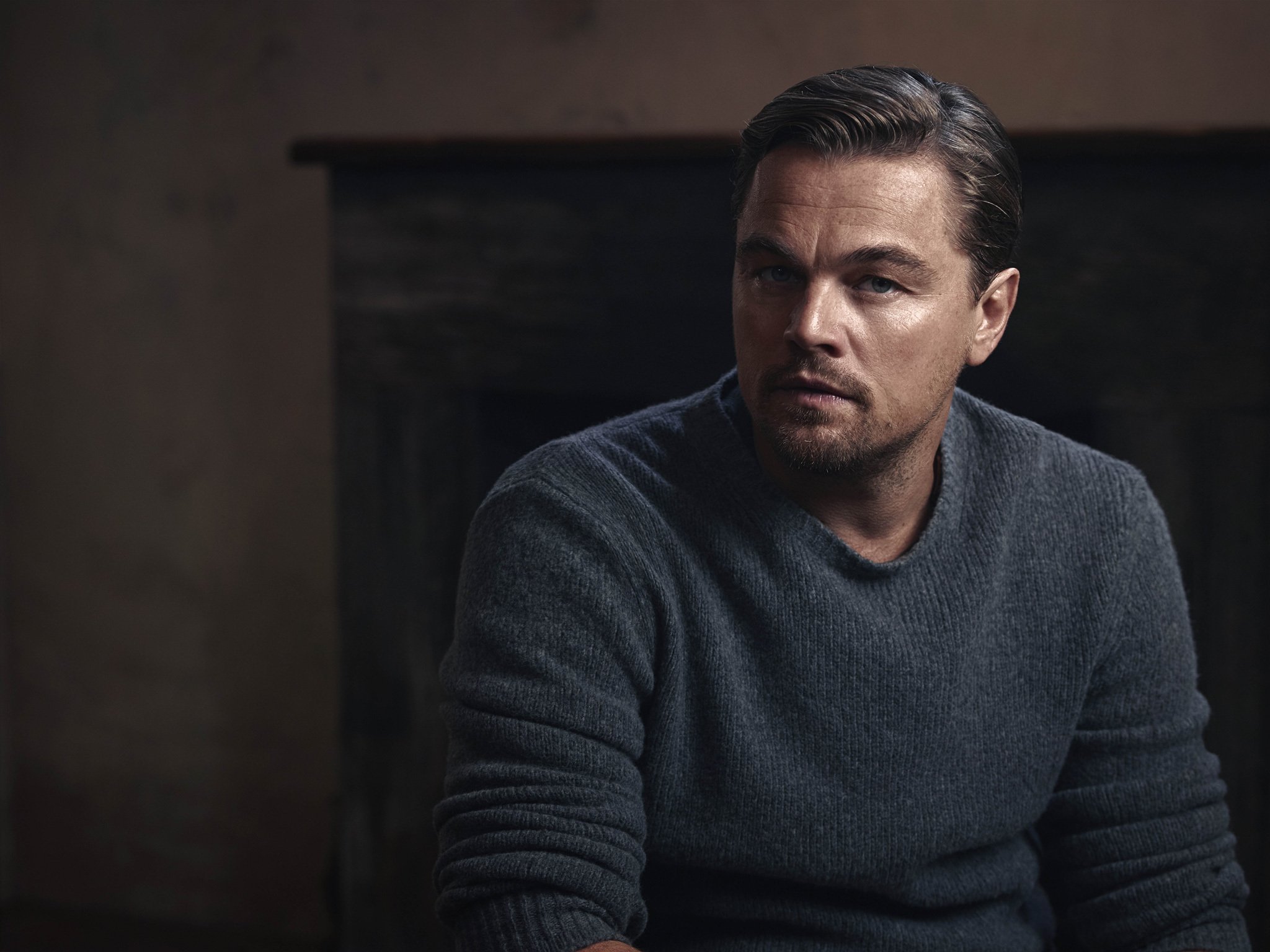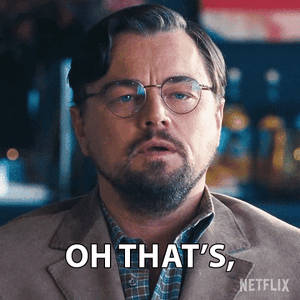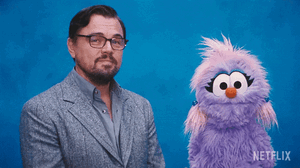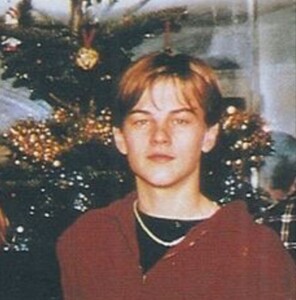
Everything posted by akatosh
-
Leonardo DiCaprio - (Please Read First Post Prior to Posting)
I'm also very excited for this. I hope we'll get to see a trailer soon.
-
Leonardo DiCaprio - (Please Read First Post Prior to Posting)
Congrats
-
Leonardo DiCaprio - (Please Read First Post Prior to Posting)
At this point I don't really care that much what he does next. Just start DOING something, Leo! We need more films. Does anybody know when Jen Lawrence will be able to work again?
-
Leonardo DiCaprio - (Please Read First Post Prior to Posting)
‘Devil In The White City’ Movie Revived At 20th Century With Leonardo DiCaprio And Martin Scorsese Eyeing Reunion EXCLUSIVE: The long-awaited film adaptation of Erik Larson’s bestselling book The Devil in the White City just got a shot of adrenaline, as sources tell Deadline that 20th Century has come on to the project with Leonardo DiCaprio in talks to star and Martin Scorsese in talks to direct. DiCaprio and Scorsese would also produce along with Stacey Sher, Rick Yorn and DiCaprio’s Appian Way partner Jennifer Davisson. Sources add that there is currently no script for the pic, which is based on Larson’s nonfiction classic Devil in the White City: Murder, Magic and Madness at the Fair That Changed America, first published in 2004. DiCaprio and Scorsese have been developing the project for some time, and sources say they always felt this was a story that has resonated throughout the years and still does. DiCaprio first landed rights to the book in 2010, and though the project has gone through various stages of development over the years, (including a TV series adaptation at Hulu that never came to fruition), insiders say that following a meeting with 20th Century execs, all parties were on board to tell this story at the theatrical level. The story follows Dr. HH Holmes, a cunning serial killer believed to have murdered anywhere from 27 to 200 people at a time when the city of Chicago was enthralled with hosting the World’s Columbian Exposition of 1893. The book plays off the contrasts between the hopeful expectations and wonders presented at the exposition and the dark deeds of Holmes, who maneuvered in its shadows and built a carefully-concealed house of horrors. This marks another massive victory for David Greenbaum, who leads Disney Live Action and 20th Century Studios and Steve Asbell, president of 20th, who have been on a roll going back to landing another high-profile package: the Bruce Springsteen pic Deliver Me From Nowhere starring Jeremy Allen White. They quickly followed that by landing the sought-after package The Barrier starring Austin Butler with Edward Berger directing. All three projects line up with what Greenbaum wants for 20th: films that that embody commercial, global theatrical and prestige with A-list talent and original filmmaking. Asbell, Greenbaum and SVP Production Sarah Shepard will be overseeing Devil in the White City for the studio. LBI Entertainment reps DiCaprio, Appian Way and Scorsese, who is also repped by WME. https://deadline.com/2025/01/leonardo-dicaprio-devil-in-the-white-city-martin-scorsese-movie-1236263710/
-
Leonardo DiCaprio - (Please Read First Post Prior to Posting)
Edward Noprton saved Leo. He has told the story before at some talk show if I remember correctly. Thanks for saving him, Edward! It starts at about 1 minute.
-
Leonardo DiCaprio - (Please Read First Post Prior to Posting)
I also love Don't Look Up. I thought it was super entertaining and i never understood the hate it got.
- Lily Gladstone
-
Leonardo DiCaprio - (Please Read First Post Prior to Posting)
Yes. Please say this won't be moved to 2026🙏
-
Leonardo DiCaprio - (Please Read First Post Prior to Posting)
More Details on Damien Chazelle/Leonardo DiCaprio’s ‘Evel Knievel on Tour’ January 2, 2025 Jordan Ruimy Last month, a report indicated that Damien Chazelle’s next film would tackle stunt devil Evil Knievel, and star Leonardo DiCaprio. It looks like this project is legit. Some more details have now emerged (via Production Weekly). Firstly, the film is called “Evel Knievel on Tour,” and is written by William Monahan (“The Departed”) and Terrence Winter (“The Wolf of Wall Street,” “The Sopranos”). This will also not be a straight up rise and fall biopic. Instead, the story is set in a single year, 1974, and tackles Knievel’s ambitious planning to jump across Idaho’s Snake River on his motorcycle. Knievel was an American stunt performer, and entertainer, known for his motorcycle jumps (and bad temper). During his stunt career, Knievel suffered more than 433 bone fractures, earning an entry in the Guinness Book of World Records as the survivor of "most bones broken in a lifetime.” Knievel ruined his career when he attacked a man with a baseball bat due an unflattering book written about him. The victim was knocked unconscious and needed major surgery to repair his arm. Knievel served 6 months in jail, but lost all his endorsements and contracts. Chazelle’s last film, “Babylon,” tanked at the box-office, making $63 million against a production budget of a little under $100 million. “Babylon” ultimately lost Paramount an estimated $87 million. Oddly enough, it was a huge hit in France, with both critics and audiences. Back in April, Chazelle set up his supposedly next film with Paramount, this one rumored to take place in a prison. It was described as a “mid-budget” drama with action elements. He was supposed to shoot it this fall, but it never happened — did he suddenly get cold feet? A few months later, Chazelle told Vanity Fair that he was now working on two projects, and didn’t know which one was going to get made first. ‘Evel Knievel’ is still in development, but things are revving up fast enough that I wouldn’t be surprised if it is indeed his next film. https://www.worldofreel.com/blog/2025/1/2/more-details-on-damien-chazelleleonardo-dicaprios-evel-knievel-on-tour
-
Leonardo DiCaprio - (Please Read First Post Prior to Posting)
Happy New Year everyone!🎉🎆
-
Leonardo DiCaprio - (Please Read First Post Prior to Posting)
Oh no why? I want a new Leo movie in 2025
-
Leonardo DiCaprio - (Please Read First Post Prior to Posting)
New pics of Leo in St. Barts like every year: https://www.tmz.com/2024/12/29/leonardo-dicaprio-vittoria-ceretti-st-bart-beach-day/
-
Leonardo DiCaprio - (Please Read First Post Prior to Posting)
-
Leonardo DiCaprio - (Please Read First Post Prior to Posting)
Cute video of Leo showing his dance moves 😀 https://www.instagram.com/p/DD2-yhgSFv2/
-
Leonardo DiCaprio - (Please Read First Post Prior to Posting)
Another new project:
-
Leonardo DiCaprio - (Please Read First Post Prior to Posting)
Not sure if this was posted...
-
Leonardo DiCaprio - (Please Read First Post Prior to Posting)
Margot mentioning Leo, WOWS, thinking about Titanic when she needs to cry and talking about seeing Kate visit Leo on set: https://podcasts.apple.com/us/podcast/margot-robbie/id1722148571?i=1000678257012
-
Kate Winslet
Two Golden Globe noms for Kate
-
Leonardo DiCaprio - (Please Read First Post Prior to Posting)
Wow what a great pic. He is looking gooooood. 🥵😍
-
Leonardo DiCaprio - (Please Read First Post Prior to Posting)
Titanic reunion
-
Leonardo DiCaprio - (Please Read First Post Prior to Posting)
Another angle of the Leo and Kate video. Such a cute smile. https://www.instagram.com/reel/DCn2SSnuSZC/?utm_source=ig_web_copy_link
-
Leonardo DiCaprio - (Please Read First Post Prior to Posting)
Aaaw finally new Leo and Kate content. They are precious. 🥰Movie #3 when???
-
Leonardo DiCaprio - (Please Read First Post Prior to Posting)
Nice collection. Some of the smaller ones are new to me. https://markseliger.com/collection/the-evolution-of-leonardo-dicaprio/ Cute story:https://metro.co.uk/2024/11/13/leonardo-dicaprio-caught-famous-co-star-crying-titanic-music-set-surreal-moment-21983177/
-
Leonardo DiCaprio - (Please Read First Post Prior to Posting)
Happy Birthday, Leo. Thank you for all these great performances and movies.🥰 Happy Leo day to everbody on this message board 🥳
-
Leonardo DiCaprio - (Please Read First Post Prior to Posting)
Kate talking about her and Leo singing cheesy love songs


